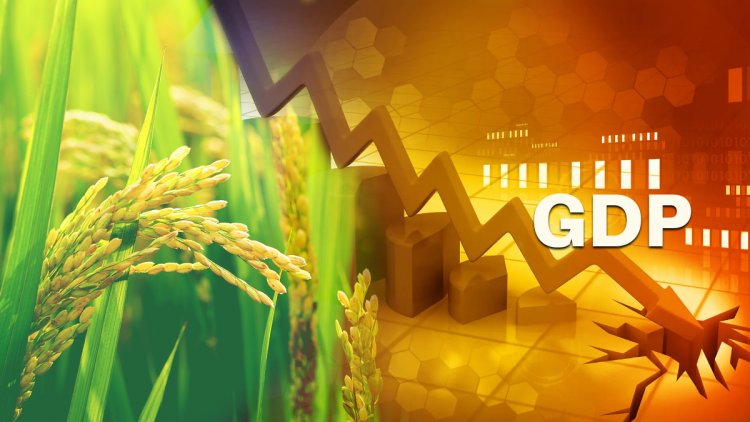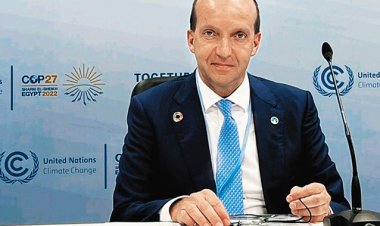India to grow at 6.5pc in 2024: UNCTAD
The United Nations Conference on Trade and Development has raised India’s GDP growth forecast by 30 basis points to 6.5% in 2024. India grew 6.7% in 2023, as per UNCTAD.

The United Nations Conference on Trade and Development has raised India’s GDP growth forecast by 30 basis points to 6.5% in 2024. India grew 6.7% in 2023, as per UNCTAD.
“The expansion in 2023 was driven by strong public investment outlays as well as the vitality of the services sector which benefited from robust local demand for consumer services and firm external demand for the country’s business services exports. These factors are expected to continue to support growth in 2024,” the United Nations trade agency says.
An increasing trend of multinationals extending their manufacturing processes into India in an effort to diversify their supply chains will also have a positive impact on Indian exports, while moderating commodity prices will be beneficial to the country’s import bill, says UNCTAD.
“The Reserve Bank of India is expected to keep interest rates constant in the near term, while restrained public consumption spending will be offset by strong public investment expenditures,” it says.
India's GDP grew 8.4% year-on-year in the quarter ended December 31, 2023, much higher than the Reserve Bank of India (RBI) monetary policy committee's forecast of 6.5%.
Meanwhile, the International Monetary Fund has raised India’s GDP growth forecast to 6.8% for the financial year 2024-25. This comes close on the heels of the Asian Development Bank raising India’s GDP growth forecast for the financial year 2024-25 to 7% from 6.7% earlier.
Earlier this month, the World Bank raised India’s GDP growth forecast by 20 basis points to 6.6% for the financial year 2024-25. In March, Morgan Stanley raised India’s GDP growth forecast for the financial year 2024-25 by 30 basis points to 6.8% from 6.5%, aided by continued traction in industrial and capex activity.
The UN report forecasts global economic growth to 2.6% in 2024, barely above the 2.5% threshold commonly associated with a recessionary phase. This rate also signifies the third consecutive year of growth below the pre-pandemic average of 3.2% from 2015 to 2019.
It says the prevailing focus on inflation overshadows urgent issues like trade disruptions, climate change and rising inequalities. It advocates for structural reforms and coordinated global efforts, proposing a comprehensive strategy that includes both supply-side policies to boost investment and demand-side measures to improve employment and income.
While the global economic slowdown in 2023 was less severe than originally projected, UN Trade and Development in its latest report warns that further growth deceleration could be expected in 2024.
In other Southern Asian countries, however, economic growth remains more subdued. Three countries in the region – Bangladesh, Pakistan and Sri Lanka – are currently under IMF programmes, the conditionalities of which necessitate the application of tight monetary policies and fiscal austerity measures whose impacts are most severely felt by low-income households, says the UN body.
Looking to 2024, market expectations for lower interest rates raise hope for mitigating the pressure on private and public budgets worldwide, says UNCTAD. “However, monetary policy alone cannot provide solutions to key global challenges, the Trade and Development Report Update says, pointing to the ongoing crises linked to sovereign debt, ever-growing inequalities, and climate change. It underscores the need for coordinated global action, along with a balanced policy mix of fiscal, monetary, demand-side and investment boosting measures to achieve financial sustainability, create jobs, and improve income distribution,” it says.
Shifts in international trade
In 2023, global merchandise trade fell by about 1% in real terms, marking a significant divergence from overall economic growth. The contraction was partly due to trade tensions among some large economies and subdued global demand.
Such headwinds were compounded by a “high base” effect due to the unprecedented temporary shift in consumption patterns – from services to trade-intensive durable goods – during the COVID-19 pandemic. As buying habits normalized – and even fell short in some sectors – global merchandise trade declined.
Over the last six months, disruptions in key shipping routes, such as the severe drought affecting the Panama Canal and attacks on vessels in the Red Sea, have strained merchandise trade further and significantly increased shipping costs.
Debt dynamics in developing countries
Developing countries’ governments are struggling under increasing debt payment obligations. In 2022, they paid $50 billion more to external creditors than they received in new loans. High global interest rates have worsened these challenges, with currency depreciation making foreign-denominated debt costlier.
By 2023, nine low-income countries had fallen into debt distress, with an additional 25 on the brink, underscoring a worsening global debt crisis.
Commodity markets remain volatile
Despite falling by 6.8% in 2023, commodity prices remain significantly higher than pre-pandemic levels. The energy sector saw the largest price drop at 16.1%, yet prices are still about 40% higher than the averages between 2015 and 2019. These elevated prices benefit exporters but heavily burden net commodity-importing developing countries.



 Join the RuralVoice whatsapp group
Join the RuralVoice whatsapp group







































